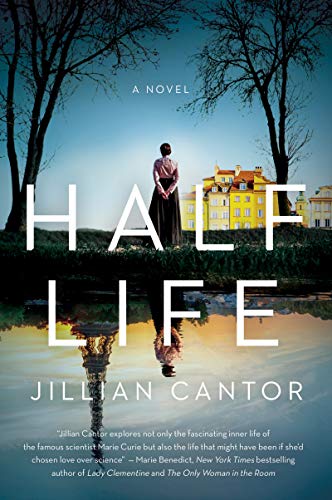Half Life
At age 24, Marya Sklodowska leaves Poland to follow her older sister and study at the Sorbonne. She, now Marie, meets and marries fellow researcher Pierre Curie. They become giants in the new science of radioactive elements. She is the first female Nobel Prize recipient and later the only Nobel winner in two different disciplines. Among other achievements, during WWI she develops and organizes transportable X-ray machines that save many front-line wounded soldiers.
But what if Marya had chosen to stay home? Half Life answers that question. Alternating chapters describe Marya’s fictional life and Marie Curie’s mostly-true grand journey. Marya marries her Polish boyfriend and defers her dream to join her older sister and study at a university. The two versions cover four decades from 1891until Marie and Marya succumb to illnesses in 1934.
Marie and Marya are the same person: brilliant, passionate about work, children and lovers, and brutally honest. Each must face their society’s bias against high-achieving, educated women. The same family members and close friends hover in the separate orbits of Marie and Marya and thereby pull readers into how those lives will unfold. Small and large consequences of chances taken (or not) make for interesting outcomes. Cantor’s details of language, customs, and how people interact in those times and places are spot on. Author Notes help sort out the real from imagined events and characters. Both sweeping stories are intense but not forced. Yet, with so much time, so many events, and so many people to cover, the two versions might have worked better in separate, more in-depth books.










